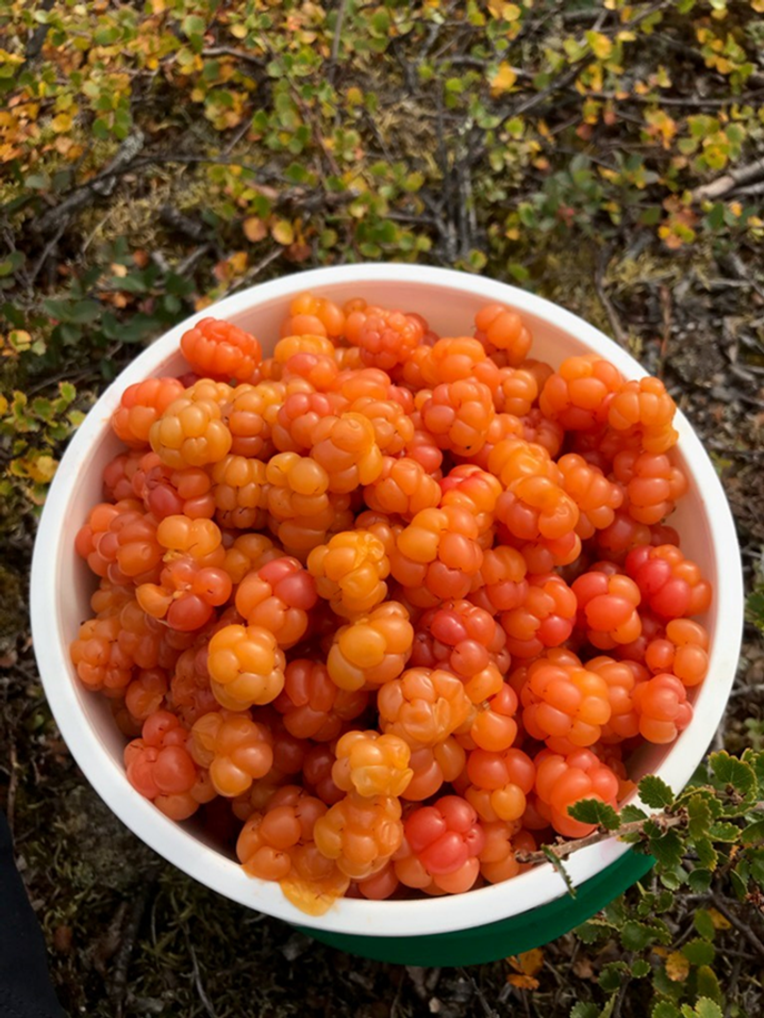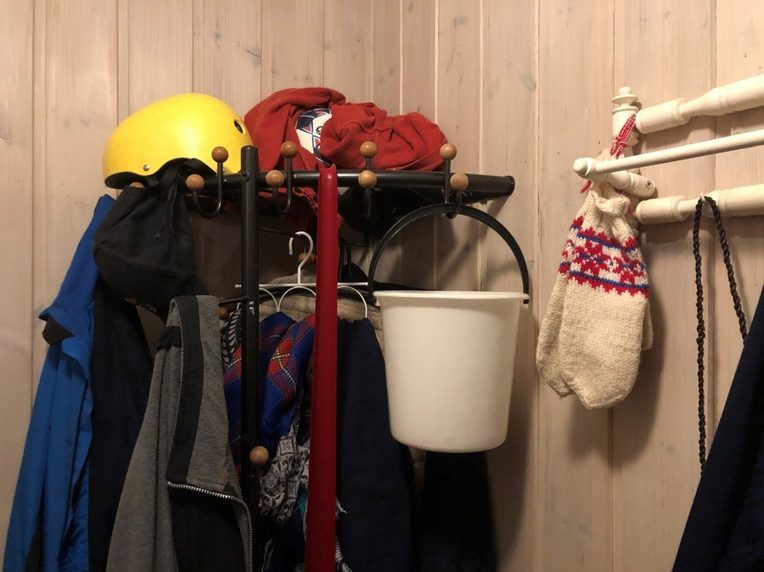HandsOn Cloudberries
From the Series: HandsOn: Touching the Digital Planet
From the Series: HandsOn: Touching the Digital Planet

Sara picks cloudberries[1] with both hands. Her gentle fingers surround each berry. She loosens it from its stem and it rolls into the palm of her hand before she slips it into the bucket. Harvesting must be done before the night frost sets in, putting an end to the cloudberry season. Sara picks tenderly, to avoid breaking the thin skin of the soft and orange berry. She takes pride in filling her bucket with mature berries, allowing no leaves, twigs, or moss to fall in. Once the bucket is full, Sara carefully pours the berries into a large bag of strong, transparent plastic, before she goes back to filling her bucket again. On a good day, in a marsh with an abundance of cloudberries, her harvest reaches 30 liters of berries. Spending hours and days in the cloudberry landscape, picking on her knees to ease the pain in her back, is not only about the number of berries she harvests, but also about relationships and traditions, the memories and emotions, harvesting cloudberries evoke.

Sara is in her late fifties. Like most Coastal Sámi of her age in the community of Unjárga-Nesseby, northern Norway, she grew up with cloudberry picking forming an essential, seasonal activity that involved the whole family. Historically, picking cloudberries for sale and subsistence was an important part of Sámi livelihoods. In Unjárga-Nesseby, cloudberry sales served as a valuable source of income among the Coastal Sámi up until the 1950s. For some families, where everyone was involved, cloudberries remained economically important throughout the early 1970s (Nilsen 2009).
Only a small part of the Unjárga-Nesseby area is privately owned. Still, user rights have been regulated by unwritten but locally recognized rules. Traditionally, each family had their particular areas for cloudberry picking. Sara was six when she was brought along to pick cloudberries in her family’s allotted marshland. At that time, she was considered too young to join her father and her three older siblings. Watching them packing their gear to spend several days in the marsh, she caught sight of the rare foodstuff her father would bring along:
Chocolate! It was a luxury we did not have at home. Apples! A true luxury we did not have at home. And pea soup with sausages for dinner! We certainly never had that at home. It was just such a luxury at that time. So, I stood there crying, and my father felt sorry for me and lifted me up on that little moped, in front. And then we drove. The others started up by bicycles. When we arrived by the marsh, we set up tents and… It was not that fun to pick cloudberries, really, but it was great fun to be part of the trip. There were lots of people around. Lots of camps. We got fish in the river and made dinner on the fire . . . You know, those kinds of things. And what I remember the most: At night it was very cold. We did not have sleeping bags, we had woollen blankets, and we lay close to each other to keep warm. It was really great fun!
After a period in her youth when Sara did not go picking cloudberries, she returned to her family’s place and resumed picking cloudberries with her father. They picked for decades—side by side—sharing coffee by the fire, recalling events, and retelling stories, basking in the sun, or shivering in sleet and cold weather, adding to their memories of the shared cloudberry landscape. Eventually, her father’s health deteriorated, and for the last eight years, he has been physically unable to join Sara on these cloudberry journeys. However, in Sara’s beloved childhood marshes, picking berries has now become a one hand task. The other enables a digital companionship with her father:
On all my trips [up here] I call dad. And tell him where I am, what I’m doing. And he says, “go there,” “do this.” Because he is not able to get there himself, and he becomes so happy, right, when he is kind of with me. Sometimes I talk to him on the phone while I am picking berries, and then he is sort of with me on that trip.
The significant connection to this part of Sara’s home place landscape, and the history and memories it entails, is still jointly sustained by the two generations through Sara’s smartphone. While missing her father’s physical presence, Sara has found a way to bring him along picking, side by side. Well, almost.
Knowing when cloudberries mature relative to each other at different marshes depends on elevation, temperature, precipitation, and the prevailing wind direction. Sara knows how to prolong the cloudberry season to the fullest. When the first cloudberries are about to ripen, Sara reminds her relatives and friends about her unavailability for the coming weeks. “This is my free time. I feel so happy at this time of year,” she explains. Most of the berries she picks are given away as gifts to older relatives who are no longer able to get out in the field to pick their own berries. While selling berries was an economic necessity in her childhood, Sara would currently consider it immoral to demand money for the delight she feels spending time in the marshlands. Knowing that the berries and their tastiness are fully appreciated by the recipient is what matters the most. While berries are tenderly picked, and cloudberry excursions are relished, the berries Sara saves for her father and keeps for herself are those picked from her childhood marshes.
[1] Rubus chamaemorus, in Sámi luopmánat.


Nilsen, Øystein. 2009. Sjøsamene ved Varangerfjorden. En kortfattet gjennomgang av historien de siste 10 000 år [The Coastal Sámi by the Varanger Fjord: A Brief Overview of the History over the Last 10,000 Years]. Varangerbotn, Norway: Várjjat Sámi Musea Čállosat/Varanger Samiske Museums Skrifter.